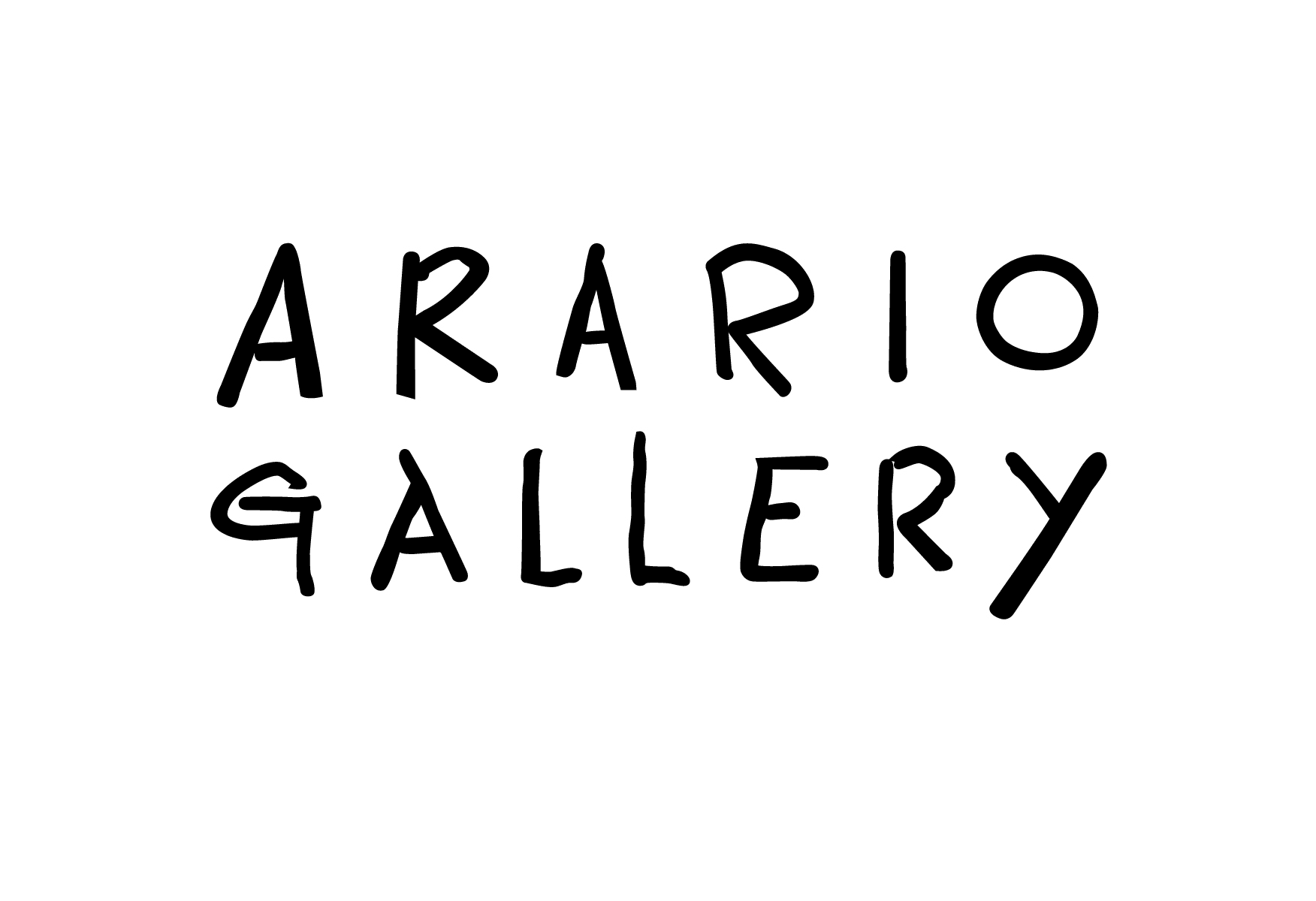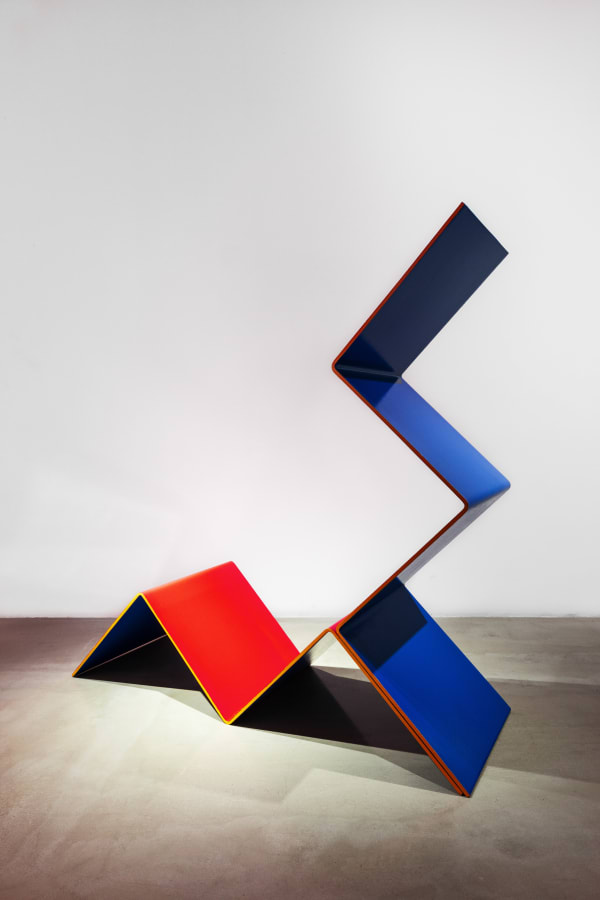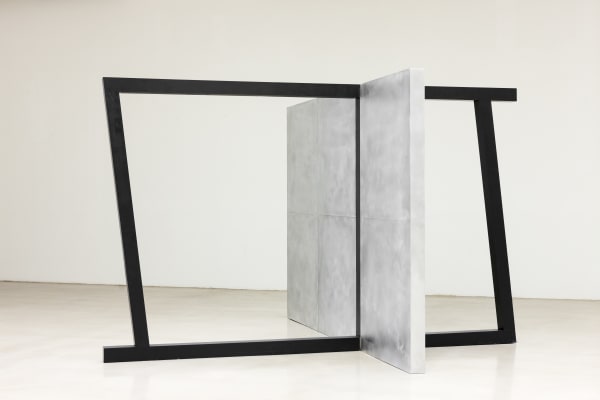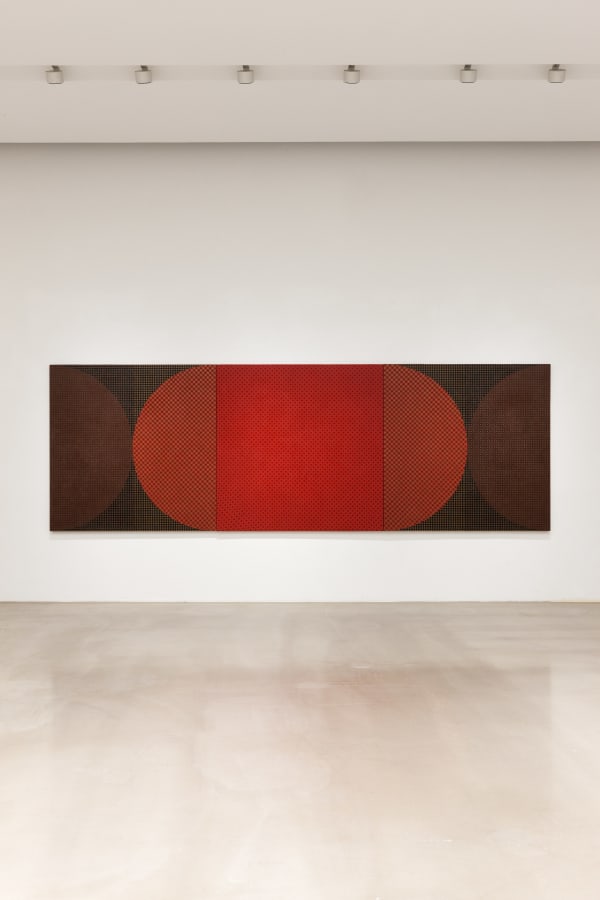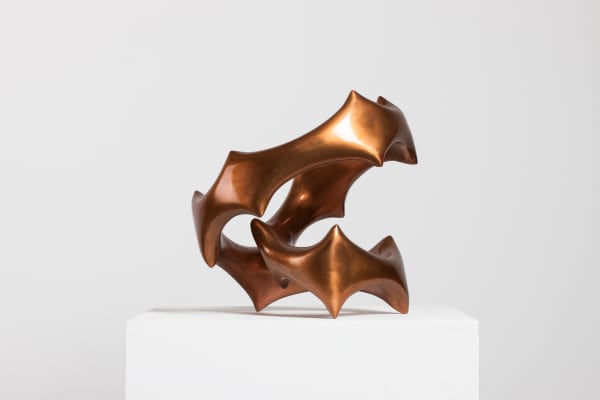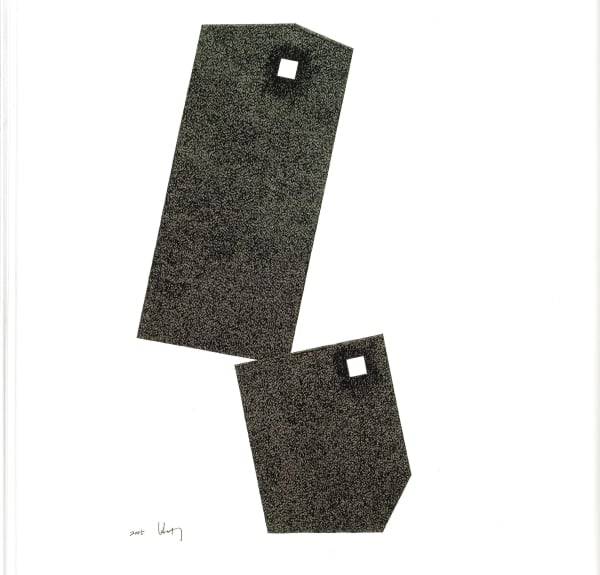UM Tai-Jung: A Stranger Holding Two Wings
ARARIO GALLERY Seoul | Samcheong and Cheonan are pleased to present A Stranger Holding Two Wings, a solo exhibition of Korean abstract sculpture's first generation pioneer Tai-Jung UM, opening on January 22, 2019. Featuring approximately fifty works, the artist's first solo exhibition with the gallery includes various aluminum sculptures and two-dimensional pieces created over the past fifty years of Um's career as an abstract sculptor, along with recent large-scale aluminum works produced between 2017 and 2018. Opening simultaneously in Seoul and Cheonan, the exhibition provides a multifaceted overview of Um's oeuvre that has pursued a remedial space built on performative practices opting for the materiality of metal. The exhibit will be on view through February 24th at Arario Gallery Seoul | Samcheong, and May 12th at Arario Gallery Cheonan.
Since his fascination with the materiality of steel during his undergraduate studies at Seoul National University in the early 1960s, UM has devoted himself to metal sculpture and investigated materials and resources throughout his career that continues to the present. In 1967, he caught the art world's attention as his emblematic steel sculpture A Scream won the Prime Minister's Prize in the 16th National Art Exhibition, and in the seventies he presented copper sculptures that revealed a remarkable contrast between the material's internal and external sides in terms of color and texture. In the 1980-90s, UM's abstract copper sculptures with a prominent vertical structure referred to Eastern philosophy concerning the ideas of the celestial and worldly, as exemplified by his Heaven, Earth, and Human, and the 90s' Bronze-Object-Age series reflected the shapes of Korean traditional wood furniture and pillars. From 2000s on, UM has put more emphasis on form-based works made of aluminum boards and steel frames that illustrate coexistence and reconciliation of mutually exclusive elements-such as Yin and Yang, and time and space-through the formal language of the vertical and horizontal, sculptural qualities of lines and planes, and harmonious palette of silver and black.
For a comprehensive coverage of UM's art world established over the past fifty years, the exhibition has been divided into two venues according to the medium-the sculptures in Cheonan and two-dimensional works in Seoul | Samcheong-in order to shed light on the interconnectedness between the two fields. The 4th-floor exhibition space in Cheonan will display major steel and copper sculptures produced between 1969 and 2010, such as Energy 69, No.1 (1969) and Bronze-Object-Age series (1997), while his new large-scale aluminum works created since the 2000s will be on view on the 3rd floor. As a neutral material, aluminum aligned fittingly with Um's pursuit of Mandala, a world of unity that he has sought to reach through his work. The four sculptures, each representing one of the four seasons, transform the exhibition space into a sculpture park encompassing all the seasons within a single site. Premised on a relationship between 'a wall as an other and I,' Serene Wall and I (2017) explores the time-space in which an other and "I" coexist through the structural combination of disparate elements-specifically, a silver plane of a smoothly refined aluminum panel and a black line of a steel pipe. A Stranger Holding Two Wings (2018), a recent work that shares the title with this exhibition, envisions UM's philosophical embrace of an isolated "other" (stranger) through the composition of a black linear steel pipe holding two sheets of symmetrical aluminum panels. The other works, A Peaceful Space (2017) and A Meditative Space (2018), continue to generate a dialogue with their surrounding space, drawing the viewer in to the unique space-time, which expands into a kind of a new universe, embodied and realized by Um's sculptures.
In the gallery's Seoul | Samcheong branch, UM's two-dimensional works constantly produced since the 2000s will be exhibited. The small drawing series Crack (2000-2002), while reminiscent of cheerful gestures and bodily movements of a person or a character, was completed by a repetitive performance of drawing lines infinitely with an ink pen on a white paper. Also on view in the basement-level exhibition space are two-dimensional color band pieces such as Heaven, Earth, and Human (2018), Endless Column-Mandala (2018), and Heaven is Round, Earth is Round, and Man is Round (2018). As shown in the drawings, the method of accumulating layers of numerous ink lines, overlaying color bands with intervals of 1 cm, and coloring again closely resembles not only the formal qualities of UM's sculptures but also the production technique of striking, welding and polishing a piece of metal. In regard to this, Um has stated, "the process of sculpting, to me, is the process of healing." Upon encountering Um's various works that are intricately connected to each other, the viewer will come face to face with his yearning for a personal remedy and ideals of unification that lie beyond his life-long pursuit of the materiality of metal and sculptural orders.
Born in 1938 in Mungyeong, South Korea, Tai-Jung UM graduated from the Department of Sculpture in College of Fine Arts at Seoul National University, studied at Saint Martin's School of Art in London, and held positions as a research professor at Berlin Fine Arts University and professor in the Department of Sculpture in College of Fine Arts at Seoul National University. He was awarded the Prime Minister's Prize from the National Art Exhibition (1967), Grand Prize from the Korean Art Grand-Prix Exhibition (1971), and Mirok Li Prize from the 7th Mirok Li Award (2012). Starting with a solo exhibition at Gwangju Gallery (1972), he has participated in numerous solo and group exhibitions including the 12th Biennale de Sao Paulo (1973), Woodstock Art Gallery (1980), Georg Kolbe Museum (2005), and Sungkok Art Museum (2009). In 2004, he was appointed Emeritus Professor at Seoul National University, and since 2013, he has served as a member of The National Academy of Arts of the Republic of Korea.
